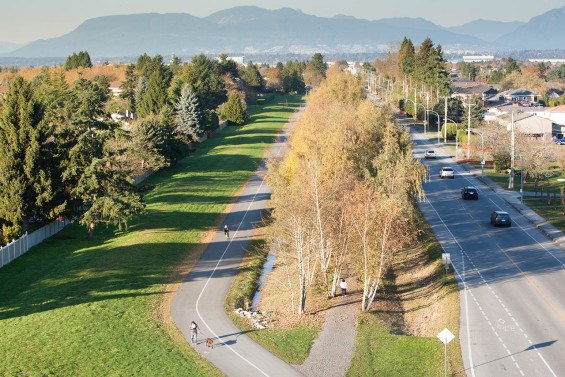Does Richmond have enough greenways to encourage residents to reduce their carbon emissions?
That’s a question posed to the City of Richmond in light of a recent study done by UBC researchers that revealed people who live closer to an urban greenway have a reduced carbon footprint, compared to those who do not.
Richmond currently has four greenways; Steveston, Garden City, Railway and Waterfront.
“We are constantly expanding our trail network; a good example is the recent opening of the new 2.9 kilometre trails on the Garden City Lands,” said Ted Townsend, city of Richmond spokesperson.
Townsend added that the city has “long-term plans for a new greenway along the Lansdowne corridor from Garden City Lands to Hollybridge.”
The UBC study surveyed 585 participants, half of which lived within 300 metres of Vancouver’s Comox-Helmcken greenway and the rest lived within a 500-metre radius.
Participants who lived closer reduced their daily distance travelled by car or bus by 18 per cent after the greenway was built.
“Less commuting meant they generated 21 per cent less travel-related emissions, producing 140 grams less than the previous year,” said Victor Douglas Ngo, researcher at the health and community design lab at UBC.
In terms of encouraging residents to switch to alternate modes of travel that does not involve carbon emission, particularly walking and cycling, Richmond’s Official Community Plan (OCP) sets out to achieve 51 per cent of all trips made by sustainable travel modes by 2041.
The city’s OCP also focuses on creating enhanced neighbourhood links, such as smooth walking surfaces, curb ramps and accessible pedestrian features, which, according to the city, would encourage people to walk rather than drive within their own neighbourhoods


.jpg;w=120;h=80;mode=crop)
